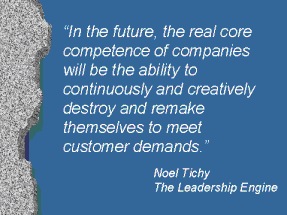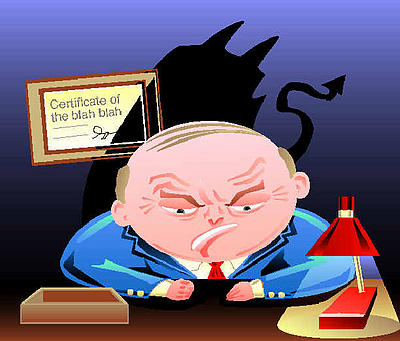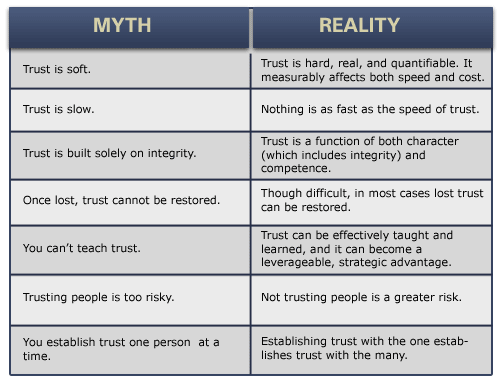 I am convinced that a person who does not know world history is severely limiting the amount of experiences to draw upon in times of crisis. The true story of Xenophon and “the Ten Thousand” men who marched out of Persia is inspirational, educational, and filled with leadership wisdom. There are many parallels between the five month march of the Greeks out of Persia and the last six months for many reading this blog. Here is the Wiki history for the background on Xenophon’s and the Ten Thousand’s march.
I am convinced that a person who does not know world history is severely limiting the amount of experiences to draw upon in times of crisis. The true story of Xenophon and “the Ten Thousand” men who marched out of Persia is inspirational, educational, and filled with leadership wisdom. There are many parallels between the five month march of the Greeks out of Persia and the last six months for many reading this blog. Here is the Wiki history for the background on Xenophon’s and the Ten Thousand’s march.
In his advance against the Persian king, Cyrus the Younger used many Greek mercenaries left unemployed by the cessation of the Peloponnesian War. Cyrus fought Artaxerxes II in the Battle of Cunaxa. The Greeks were victorious in that battle, but Cyrus was killed. Shortly thereafter, the Greek general Clearchus of Sparta was invited to a peace conference, at which he was betrayed and executed. The mercenaries, known as the Ten Thousand, found themselves without leadership deep in hostile territory, near the heart of Mesopotamia, which was far from the sea. They elected new leaders, including Xenophon himself, and fought their way north through hostile Persians, Armenians, and Kurds to Trapezus on the coast of the Black Sea. They then sailed westward back to Greece. On the way back, they helped Seuthes II make himself king of Thrace. Xenophon’s record of the entire expedition against the Persians and the journey home was titled Anabasis (“The Expedition” or “The March Up Country”). It is worth noting that the Anabasis was used as a field guide by Alexander the Great during the early phases of his expedition into Persia.
Now that you have a background of Xenophon and the 10,000 mercenaries, you will enjoy the leadership lessons drawn from Xenophon’s book Anabasis. Here is a summary of the leadership lessons written by Robert Enzenauer. What parallels can you draw from the experiences of Xenophon to apply to your life? Enjoy the article and learn to lead better from Xenophon’s experiences. God Bless, Orrin Woodward
Many popular books have been written describing the leadership principles of heads of state, Biblical figures, athletes, military commanders and even fictional heroes.
However, according to management expert Peter Drucker, the first systematic book on leadership–and perhaps the best book–was written by Greek historian Xenophon.
Few leaders outside the military even know this extraordinary individual.
Xenophon was one of the well-to-do disciples of Socrates who left Athens to serve with the Greek contingent “the Ten Thousand” raised by Cyrus the Younger of Persia against Artaxerxes.
These troops served Cyrus at the disastrous battle of Cunaxa (401 BC). When Cyrus was killed, the Ten Thousand were forced to flee or surrender to the Persians. After the Persians killed the Greek generals, Xenophon was chosen as one of the leaders of the heroic retreat from Babylon to the Black Sea, with the Greeks fighting their way through an unknown and hostile land.

The success of the five-month march, one of the most famous in military history, was a triumph of discipline and improvisation in the face of overwhelming odds. Xenophon not only managed to lead his men out of Persia, but succeeded in keeping the army intact as a fighting force.
Xenophon’s Anabasis (translated March Up Country or The Persian Expedition) was translated and first published widely in English around the dawn of the 20th century. Drucker read Rex Warner’s 1949 translation and mentioned Xenophon’s writing in his classic The Practice of Management, first published in 1955. Xenophon’s vivid account was revised and reprinted with corrections in 2001 and is now widely available.
Xenophon was a prolific writer. His writing is a veritable treasure trove of examples of successful leadership. Leadership according to Xenophon was the art of inspiring the spirit and the act of following, regardless of the external circumstances. In more metaphysical terms it was the art of turning the soul toward some purpose.
Leadership requires an understanding of human nature Xenophon did not offer checklists of recipes. Rather, he sought to establish a standard for what leadership ought to be. Business leaders should acquaint themselves with this fascinating military figure. Here’s a look at some of Xenophon’s leadership principles that he shared through his writings that are applicable to today’s executives.
Leaders expect positive results
After the Battle of Cunaxa where Cyrus was killed, the Greek army was demoralized and discouraged as they saw no way of marching 1,000 miles back to Greece with 10,000 soldiers through unfriendly country, not to mention that they currently faced a numerically superior army.
Xenophon assembled the officers and spoke to them. “All of these soldiers have their eyes on you, and if they see that you are downhearted they will become cowards, while if you are yourselves clearly prepared to meet the enemy and if you call on the rest to do their part, you can be sure that they will follow you and try to be like you.”
Xenophon expected positive results and he got them. The Ten Thousand escaped from Artaxerxes and followed Xenophon on the most amazing march in history, despite countless battles and hardships.
Leaders set clear expectations for performance
According to Xenophon, the leader’s primary responsibility in forming his organization is to teach his followers the difference between correct and incorrect performance and behavior, thereby establishing a coherent, attainable set of expectations. For Xenophon, the leader, not the followers, is to blame if expectations are unclear.
Leaders provide a vision of the future
Xenophon thought vision was key. He wrote that “there will be a great rise in their spirits if one can change the way they think, so that instead of having in their heads the one idea of what is going to happen to me? They may think ‘what action am I going to take?'”
Leaders inspire their followers
Sustaining morale was an imperative for Xenophon. The commander who kept his men in a state of readiness, in good physical condition, sustained a competitive spirit and did all he could to ensure their safety.
Xenophon asserted, “You know I am sure that not numbers or strength bring victory in war; but whichever army goes into battle stronger in soul, their enemies generally cannot withstand them.”
Leaders succeed during adversity
According to Xenophon, the true test of a leader is whether people will follow of their own free will even during times of immense hardship. Xenophon regarded it as highly indicative of good leadership when people obeyed someone without coercion and were prepared to remain by him during times of danger.
In describing the superior leadership of Clearchus, Xenophon noted. “When he was in an awkward position, he kept his head, as everyone agrees who was with him anywhere.”
Leaders set the example
Xenophon felt that a great leader had to establish himself in the good opinion of his men and to do this he had to be a model for them by enduring hardship, showing confidence and leading by example.
On one occasion, covered in snow and warm in their beds, the men were unwilling to rise from their sleeping places and face the cold. Xenophon made the point of getting up, although he admitted the need to summon up courage to do so, and started splitting wood for a fire. His example was followed and soon many were doing likewise.
On another occasion, Xenophon was encouraging his men forward while on horseback, when Soteridas criticized him for being mounted while, he, on foot, was tired because of carrying his own shield. Xenophon’s reaction to this was to dismount immediately, take Soteridas’ shield from him, push him out of line, take his place and march with the men.
The reaction of the men to this was to hurl abuse at Soteridas and to pelt him with small stones until he reclaimed his shield and allowed Xenophon to remount.
Xenophon described Clearchus as a good leader. “Here was a good opportunity of seeing how Clearchus led his men, with his spear in his left hand and a staff in his right. If he thought that any of the men detailed for a job were slacking, he would pick on the right man and beat him.
At the same time he went into the mud and lent a hand himself, so that everyone was ashamed not to be working hard with him.”
Leaders are accessible and available
As for Xenophon himself, “Everyone knew that it was permissible to come to him whether he was in the middle of breakfast or supper, or to wake him from his sleep and talk to him, if they had anything to say which had a bearing on the fighting.”
Leaders show initiative
According to Xenophon: “… in heaven’s name, let us not wait for other people to … call upon us to do great deeds. Let us instead be the first to summon the rest to the path of honor. Show yourselves to be the bravest of all the captains, with more of a right to leadership than those who are our leaders at present. As for me, if you are willing to take the initiative like this, I am prepared to follow you.”
Leaders lead from the front, not from the rear
During a march with Seuthes, the King of Thrace, Xenophon came to a part where there was a lot of snow. He examined the ground to see whether there were any footprints leading one way or the other.
After finding that there were tracks on the road, he came back quickly. “We shall be upon these people before they know anything about it,” he said, “I shall now lead the way with the cavalry, so that, if we see anyone, he will not get the chance of running away to give information to the enemy.”
Leaders provide timely and fair discipline
Xenophon was a believer in firm and just discipline. He viewed good morale as of prime importance and saw discipline as a foundation on which to build. He noted the harm that can result from “not punishing people who were behaving in a disorderly way. The result is that, by turning a blind eye to them, you have given the worst elements among them a chance of becoming insufferable.”
He was adamant about fairness, as well. “I admit, soldiers, that I have struck men in cases where there has been lack of discipline–the sort of people who were quite content to have their lives saved by you marching in formation and fighting when it was called for, but who left the ranks themselves and ran ahead and wanted to get more than their fair share of booty.”
Leaders are honest and trustworthy
For Xenophon, trust between men and leader was an imperative. A significant motivation for warfare during Xenophon’s time was the accumulation of the “spoils of war.” However, Xenophon felt that there are no nobler and brilliant possessions than honor and fair dealing and generosity.
“I have never had anything from you for the soldiers and kept it. I have never for my own personal profit asked you for what was theirs. I have never even demanded from you what you promised me. And I swear that I would never have taken it, even if you had offered it to me, unless the soldiers were going to get what was due to them at the same time. It would have been a dishonorable action to get my own affairs straight and allow theirs to remain in a bad way, especially when I was held in honor by them.”
Leaders reward good performance
Xenophon instructed those in his control “… when you have come and taken over the command, you will give to Dexippus and to the rest of them a chance of showing what each is good for, and you will reward each according to his merits.”
In describing Cyrus, he said. “Indeed, whenever anyone carried out effectively a job which he had assigned, he never allowed his good work to go unrewarded. Consequently, it was said that Cyrus got the best officers for any kind of job.”
And, Xenophon added, “When he saw that a man was a capable administrator, acting on just principles, improving the land under his control and making it bring in profit, he never took his post away from him, but always gave him additional responsibility. The result was that his administrators did their work cheerfully and made money confidently.”
Leaders have loyal followers
One of the strongest beliefs held by Xenophon was that a commander must inculcate loyalty in his men. His attitude toward the treatment of all men, including slaves, is plain.
Willingness rather than coercion is the better way, “I think that anyone who makes trouble for his commander when there is a war on is making trouble for himself.”
In describing Clearchus’ leadership, Xenophon noted. “In difficult positions, the soldiers would give him complete confidence and wished for no one better.”
Leaders uphold the highest standards of ethical behavior
In defending himself, Xenophon called an assembly, speaking as follows: “Soldiers, I hear that someone is accusing me of wanting to deceive you. I must beg you therefore to give me a hearing. If it is proved that I am doing you wrong, then I ought not to leave this place without suffering for it. If, on the other hand, it is proved that it is my accusers who are doing the wrong, then you must treat them just as they deserve.”
Leaders take care of their followers
For Xenophon, the link between leader and soldier was an unspoken contract. The care of those under his command was paramount and went hand in hand with sustaining morale. This was not merely adopting successful tactics to ensure their safety, but meant looking after their day-to-day welfare.
Xenophon graphically describes the problems encountered when the march had to be made through deep snow and Xenophon listed the means by which such sufferings could be avoided. As a concerned leader, he ensured that his men followed instructions. According to Xenophon, the most important thing for a commander to do was to sacrifice on behalf of his men.
















